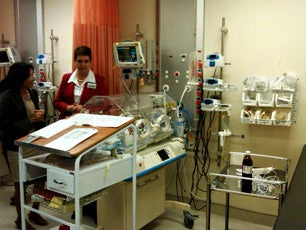Jean J. De St Antoine and Kanako Yamashita-Allen are co-authors of this post.
During a recent visit to Maseru, we met with staff at the 425-bed Queen ’Mamohato Memorial Hospital which opened in October 2011 and at one of three primary care clinics that have been running since 2010 as part of a Ministry of Health (MOH)--led public private partnership (PPP). The PPP aims to facilitate access to quality health services in a poor country.

Besides modern physical infrastructure and equipment, well-developed managerial systems connect the facilities providing unified goals, operational norms and incentives. While the overall budget, human resources and procurement of supplies are centralized under the hospital’s Operations Director, decentralized decision making and management guide the day-to-day operation of the clinics. And continuous training helps strengthen the knowledge and skills of doctors, nurses, and administrative personnel (training is also held periodically for medical staff from other facilities in the country).
Clinical guidelines help doctors and nurses make decisions on the services that are provided, when to refer patients to the hospital, and what drugs to prescribe. The ongoing development of computerized health information systems will further strengthen coordination of care across facilities by facilitating the online flow of patient information.
Quality control measures, including performance assessment of doctors and nurses, are also in place. Team rewards (e.g., vouchers for selected staff) are linked to the achievement of service and client satisfaction targets. The quality of clinical and non-clinical services is measured on a quarterly basis by an independent monitor, with penalties levied for non-compliance and actions agreed with Government for improvement.
Information provided by the staff shows high level of patient utilization of the clinics. The hospital is operating at an occupancy rate of 70% and the average length of stay is about 5 days showing that proper coordination of care between the clinics and hospital reduces the need for lengthy and costly hospitalization (e.g., lab exams could be done in the clinics prior to admission to the hospital). The hospital is also seeing a greater survival of low birth weight babies due to availability of equipment and appropriate care. A 2011 survey showed that 75% of patients are satisfied with services received.
There are challenges. Managing a PPP contract is difficult, particularly to ensure that stipulated volume and quality of services in the contract are met. This requires that the government’s capacity to manage the PPP be continuously strengthened.
At the end the visit we were not only impressed with what we saw and learned, but left with a feeling that the Lesotho PPP experience as it evolves further may offer some lessons that could be adapted to the specific reality of other countries considering health PPPs.


Join the Conversation